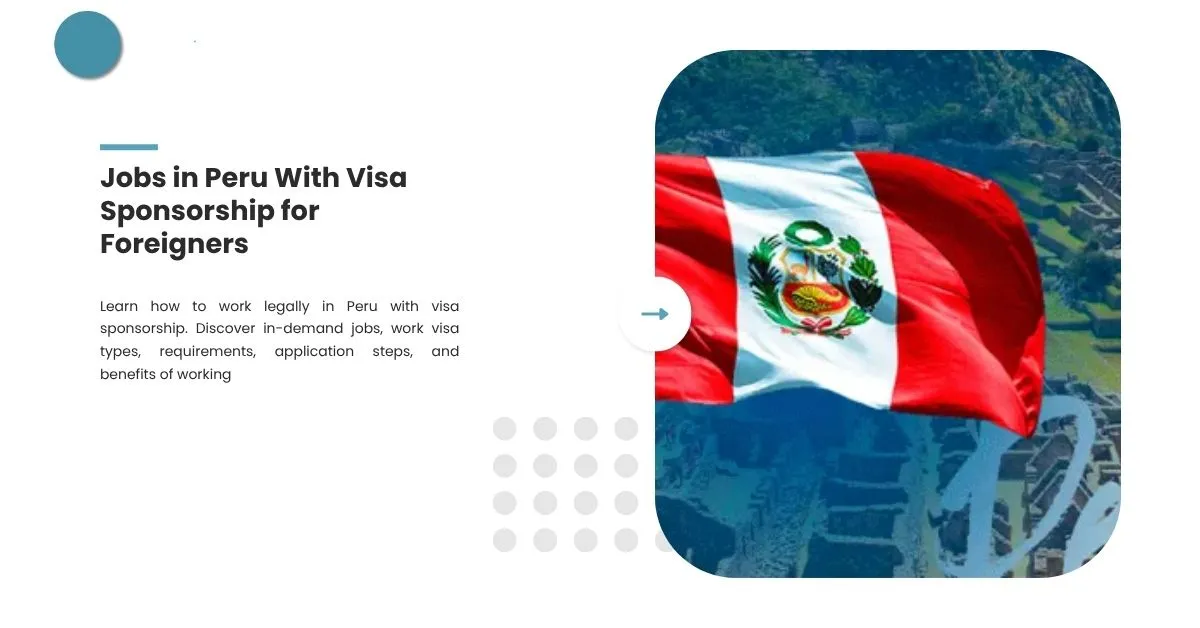Carpenter Jobs in Canada with Visa Sponsorship

Imagine crafting the very framework of communities in one of the world’s most welcoming countries. Canada’s construction boom has created an unprecedented demand for skilled carpenters, offering a golden opportunity for international tradespeople. For those with the skill and dedication, carpenter jobs with visa sponsorship provide a direct and stable pathway to a rewarding career and a new life in Canada.
This is your chance to have your expertise valued and your future secured. The benefits are substantial: a competitive hourly wage starting at $25 and often much higher, a clear route to permanent residency through programs like Express Entry, and the stability of working in a high-demand sector.
The key requirements are a proven track record, often through formal apprenticeship training or significant experience, and the physical stamina for hands-on work. If you are a qualified carpenter ready to build more than just structures to build a future, Canada is looking for you.
Why Canada Needs Skilled Carpenters
Canada’s demand for carpenters is driven by strong, long-term economic factors:
- Booming Construction Sector: Ambitious government infrastructure projects, a thriving residential housing market, and commercial development across major cities fuel continuous demand.
- Critical Skilled Trades Shortage: A significant portion of the Canadian workforce is nearing retirement, creating a substantial gap that cannot be filled domestically. This makes international recruitment essential.
- Emphasis on Quality and Craftsmanship: A strong market for custom home building, high-end renovations, and precision finish work values skilled carpenters who deliver superior quality.
- Ongoing Maintenance and Renovation: Canada’s vast existing building stock requires a constant workforce for upgrades, repairs, and retrofits, ensuring steady work outside of new construction.
Specializations within the Carpentry Trade
The carpentry profession in Canada is diverse, allowing you to leverage specific skills:
- Rough Framing Carpenter: The backbone of construction, specializing in building the skeletal structures of houses and commercial buildings (walls, floors, roofs).
- Finish Carpenter: A precision-focused role involving detailed work like installing trim, molding, cabinetry, staircases, and other features that define a building’s final appearance.
- Commercial/Industrial Carpenter: Works on large-scale projects like offices, schools, and hospitals, often involving structural formwork for concrete, metal framing, and complex layouts.
- Maintenance Carpenter: Focused on repair, renovation, and remodeling within existing structures, requiring a broad knowledge of building systems and problem-solving skills.
- Formwork Carpenter: A highly specialized niche involving the construction and dismantling of the molds (forms) used for pouring concrete foundations, pillars, and bridges.
Compensation and Benefits
- Hourly Wage: Wages are highly competitive and vary by province, specialization, and experience.
- Apprentice/Journeyperson: $20 – $30 per hour
- Red Seal Certified Journeyperson: $30 – $40+ per hour
- Foreman/Supervisor: $45 – $60+ per hour
- Overtime: Paid at 1.5x the regular rate is common, significantly boosting annual earnings.
- Comprehensive Benefits: Many employers offer:
- Extended health, dental, and vision insurance.
- Pension or RRSP (retirement savings) matching contributions.
- Paid vacation and statutory holidays.
- Tool, truck, or clothing allowances.
- Opportunities for ongoing training and upskilling.
Core Job Responsibilities
A carpenter’s duties in Canada are comprehensive and require a high degree of skill:
- Blueprint Interpretation: Reading and interpreting architectural drawings, schematics, and building plans to determine project specifications.
- Precision Layout and Measurement: Accurately laying out projects and taking measurements to guide cutting and assembly.
- Material Fabrication: Cutting, shaping, and assembling materials (wood, structural steel, concrete forms, etc.) using hand tools, power tools, and machinery.
- Structural Construction: Building foundations, installing floor beams, erecting walls and roof systems, and installing stairs.
- Finish Installation: Installing interior and exterior trim, cabinets, windows, doors, and hardware to a high standard of finish.
- Compliance & Safety: Strictly adhering to building codes, safety standards (including the use of PPE), and best practices to ensure site safety and structural integrity.
Eligibility and Visa Sponsorship Requirements
To qualify for a carpenter role with visa sponsorship, candidates must meet specific criteria:
- Formal Training & Certification: Completion of a carpentry apprenticeship program is highly valued. The Red Seal endorsement is the interprovincial standard of excellence that allows for mobility across Canada and is a significant advantage for immigration.
- Proven Experience: A minimum of 3-5 years of verifiable, full-time experience in the trade is typically required for skilled worker programs.
- Physical Fitness & Dexterity: The role demands stamina, strength, and excellent hand-eye coordination.
- Visa Pathways: Sponsorship is commonly achieved through:
- Temporary Foreign Worker Program (TFWP): Requires a positive Labour Market Impact Assessment (LMIA) from the employer.
- Provincial Nominee Program (PNP): Many provinces have specific streams for in-demand skilled trades, offering a direct pathway to permanent residence.
- Express Entry (Federal Skilled Trades Program): A points-based system where carpentry experience, a valid job offer, and certification can yield a high score.
A Strategic Application Guide for International Carpenters
- Target the Right Employers: Focus your search on established companies with the resources to sponsor visas:
- Large construction and development firms (e.g., PCL, EllisDon, Ledcor).
- Specialized carpentry and finishing contractors.
- Large industrial and commercial maintenance companies.
- Prepare a Trades-Focused Resume & Portfolio:
- Detail your experience by project type (e.g., “Framed 25-unit residential complex,” “Custom kitchen cabinet installation”).
- List all relevant tools, machinery, and software you are proficient with.
- Crucially, list your certifications and Red Seal status. Create a digital portfolio with photos of your work to demonstrate quality.
- Leverage Specialized Job Platforms:
- Use Indeed.ca, LinkedIn, and Jobbank.gc.ca.
- Set filters for “LMIA,” “Visa Sponsorship,” or “Relocation Assistance.”
- Engage with recruitment agencies specializing in skilled trades, such as Trades Labour Corporation or Aerotek.
- Navigate the Certification and Visa Process:
- Secure a formal job offer from a licensed sponsor.
- Your employer will typically guide you through the LMIA process.
- Research the Red Seal exam requirements in your target province. Having this certification dramatically improves your employability and immigration prospects.
Conclusion
A career as a carpenter in Canada offers more than just a job; it offers long-term stability, competitive compensation, and a respected place in a thriving industry. The critical shortage of skilled trades has made visa sponsorship a common and achievable goal for qualified international candidates.
By showcasing your experience, obtaining recognized certifications like the Red Seal, and partnering with licensed employers, you can successfully navigate the immigration process and lay a solid foundation for your life in Canada.
Frequently Asked Questions
What is the most important qualification?
Demonstrable, hands-on experience is paramount. Completing a formal apprenticeship is highly valued. The Red Seal endorsement is the gold standard certification in Canada, allowing you to work in any province without recertification and significantly boosting your earning potential and job prospects.
What are the most in-demand specializations?
Formwork Carpenters (for large commercial and infrastructure projects)
Finish Carpenters (for high-quality interior work)
Framers (for residential and commercial new builds)



